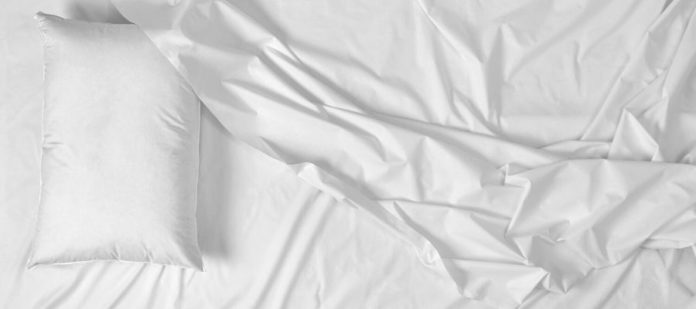You toss and you turn, but come what may, you cannot get comfortable in bed. In the winking hours of the night, you may find yourself wondering if you have insomnia, but the answer to your sleep-deprived dilemma may be simpler than that. Think back to when you bought your bedsheets and decide if it’s time to replace them. However, bedsheets tend to have more stats than the average baseball card, making it difficult to pick a new set. Fortunately, we have tips for choosing new bedsheets.
Pick Your Material
Cotton has historically been the most popular and highly recommended material for sheets. After all, it’s breathable, soft, cool, durable, and easy to wash. But you can get sheets in a variety of materials, depending on your budget, your needs, and the time of year. For example, flannel sheets are thicker and warmer for cold times of the year. Microfiber is a little less soft than cotton, but it’s cheaper and more durable for restless sleepers. Lyocell washes well, and it’s made of sustainable materials.
Know the Meaning of Thread Count
One of the biggest factors for a lot of people who are choosing new bed sheets is the thread count. The logic tends to be that the higher the thread count, the better the sheet, but this isn’t always the case. Thread count is the amount of vertical and horizontal threads you find in every square inch of your sheets. This number can range from 200 to 1,000. However, if you’re looking at sheets with thread counts over 800, then there’s a chance that retailers have used tricks such as twisting together yarns in order to inflate the thread count.
Generally, sheets with higher thread counts are softer than sheets with lower thread counts, but thread count is only one part of the equation of what makes a sheet softer. Material plays a big part in that. You may also find that softer doesn’t mean a better sheet. For some people, a crisper, farm-style sheet leads to a better night’s sleep, so a lower thread count may be better for them.
Check the Weave Patten
When it comes to how a sheet is woven, there are two main possibilities—percale and sateen. Since most people aren’t pulling out the loom and weaving the sheets themselves, we’ll skip the nitty-gritty details of how the sheets are woven and stick with how the sheets feel when you crawl under them. Percale sheets have a matte texture, like that of a dress shirt, and they’re known for being crisp, cool, breathable, and durable. Sateen sheets usually have a softer, silkier texture, and they’re heavier and warmer than their percale counterparts. There’s no right answer when it comes to weave. In fact, having one set of each may be a good idea if you live in a climate that gets hot in the summer and cold in the winter.

























